WHEN IT COMES to training your core muscles, most guys tend to value lots of movement. They’ll rip through reps of situps, leg lifts, and twists; they might even cycle their legs back and forth like they’re pedaling a bike. All this frantic flexion and rotation are in pursuit of that deep burn in the midsection that many use as a measure of a well-done workout. This approach can be useful, to some degree—so long as form is favored over frenzied speed—but it’s incomplete. No ab training program is complete without at least a few rounds of an exercise that is totally devoid of movement: the plank.
You’ve probably done planks before, and you might think you mastered the move after just a few workouts. In theory, the plank is one of the simplest exercises in your repertoire. Just get up on your elbows (or palms, depending on your preference) and hold still. In practice, however, the plank is a bit more complicated; you’ll need to be laser-focused on your form and posture, or your hold won’t be as effective as it could be otherwise. The key, according to Men’s Health fitness director Ebenezer Samuel, C.S.C.S. is to think of the plank as a full-body endeavor.
The plank is important for more than just what it can do for your midsection muscle goals. The exercise is one of the best ways to hone one of the most fundamental functions of your core: bracing. Bracing is helps to protect your spine; it’s the tension you create when you squeeze your abs and glutes once you’re in plank position. This is important for more than just your ab workouts. Having a strong understanding of the plank position will carry over into heavyweight moves like squats, when you need to support a large load on your back.
What Is a Plank
To get technical, the “standard plank” is an exercise in which a person performs a static hold of a prone neutral spine position while supporting themselves using the upper and lower extremities. Traditionally, the forearms or hands and toes are the contact points with the floor, and the body hovers above the ground in this position without letting your guts hang out and spine arch.
You’ll shift your body around in other variations of the exercise, but that bracing component will remain the most important focus of any plank.
Benefits of Planks
Planks are one of the best bodyweight exercises a person can do. They take up very little space, require practically no equipment (maybe just a mat for a standard plank), and targets not just the core abdominal muscles but also the scapular stabilization muscles and everything in between. Weight bearing into the hands or forearms activates the serratus anterior, pecs and triceps as well as muscles of the neck and upper shoulders. Keeping a neutral spine engages the transverse abdominis, multifidi, rectus abdominis and internal and external obliques. Preventing the hips from dropping fires the glutes, quads and hamstrings.
Planks can improve shoulder girdle stability for heavy overhead lifts while also addressing core strength and endurance to improve stability for just about any sport or workout. The isometric (or still) hold also can benefit posture and positioning with everyday activities like sitting, standing and walking.
Modifications to the plank can be made for comfort and skill level, including switching from resting on the hands to the forearms if you are experiencing wrist pain with weightbearing, or switching from supporting oneself on the toes to the knees if proper positioning is hard to maintain or if pain is felt in the feet and toes.
Common Plank Mistakes
Even though the plank is a simple exercise, lots of guys don’t go about them the wrong way. Maintaining full-body tension is essential, so it’s not as easy as getting up on your forearms and sitting in place; you need to squeeze the mid-back, abs, and glutes throughout. This will make it a position of work—which will make it difficult to hold in proper posture for much longer than a minute. If you’re going beyond 90 seconds or so, you’re holding the plank too long. Other common mistakes include dropping your pelvis low or raising your butt too high; your back should be flat. Finally, your head should be in a neutral position looking at the floor. If you look up and around, you’re making a mistake.
How to Spice Up Your Plank
Okay, we’re clear on the basics—and you’ve probably spent a fair amount of time straining in the pose, hoping for a stronger core.
But holding a plank position for 30 seconds or more can get a little boring. While there are plenty of benefits to a static, isometric hold, adding a dynamic component to your regular old plank can challenge your body even more and help you improve your strength and stability in new ways.
Once you’ve nailed the standard version and can hold a plank for 60 seconds, it’s time to add a new twist. Try jacking up the intensity of your plank and challenging your whole body in new ways with these alternative variations.
Challenging Plank Variations for a Strong Core
Side Plank
Flip your perspective to the side to increase the focus on your obliques.
How to Do It:
- Lie on the ground on your side with your legs extended. Place your elbow on the floor, with your arm facing forward (perpendicular to your torso).
- Raise your hips up, extending your off arm overhead.
- Squeeze your shoulder blades, abs, and glutes to form a straight line, keeping your hips in a neutral position.
- Hold your position, maintaining total-body tension.
- Hold for up to 40 seconds, then switch to the other side.
Copenhagen Side Plank
Remove some stability from the standard side plank by working on one leg, putting even more of the onus on your obliques.
How to Do It:
- Lie on the floor in a side plank position, stacking one elbow on the floor beneath your shoulder.
- Extend both legs out, then rest your weight on the top foot and brace your core to elevate your body off the floor, resting on your elbow and foot.
- Drive your bottom knee up, as if you were raising it up to run.
- Hold this position, maintaining tension to keep your spine straight and your torso from falling forward, then return to the floor.
Dynamic Star Plank
Now, you’ll add some hip abduction to the oblique-focused plank. Make sure your movements are controlled throughout.
How to Do It:
- Lie on the floor in a side plank position, stacking one elbow on the floor beneath your shoulder.
- Bend your knees together on the floor. Push your elbow and bottom knee into the floor and press upward, raising your top arm and leg up in the air in the shape of a star.
- Hold this position for a count, then return to the start.
Plank Rotation
Yes, the plank is largely a stationary movement—but this variation adds another core function, rotation, which will get your thoracic spine moving.
How to Do It:
- Get into a high plank/pushup position, with your hands on the ground directly beneath your shoulders and your feet on the floor in line with your hands.
- Push one hand into the ground, then lift the other off the floor, rotating your torso to reach up to the sky. Keep your eyes locked onto that hand as you raise up.
- Pause for a count, then rotate back to the starting position.
Bear Plank
Before you can perform the bear crawl, you need to be able to hold the bear plank position with solid form and posture.
How to Do It:
- Start by getting on your hands and knees on the ground in an all-fours position.
- Your hands should be stacked directly beneath your shoulders. Turn the pits of your elbows forward, creating mid-back tension.
- Move your knees so that they’re under your hips, and slightly wider than hip width in line with your hands.
- Lift your knees off the ground, tighten you abs and squeeze your glutes. Your back should be completely level. Keep your gaze on the ground, with your neck in a neutral position.
Bear Plank Shoulder Taps
Add some instability to your bear plank by shifting around your points of balance.
How to Do It:
- Start in a solid bear plank position, creating full-body tension.
- Lift one hand off the floor, then tap your opposite shoulder.
- Place your hand back on the ground, then repeat on the other side. Brace to keep your hips and shoulders square in the unbalanced position.
Bear Plank Around the World
The bear plank stability challenge continues as you’ll remove your legs from the floor with this variation.
How to Do It:
- Start in a solid bear plank position, creating full-body tension.
- Lift one hand off the floor and reach your arms straight out, bracing to keep your hips and shoulders square. Place the hand back on the ground.
- Repeat with the other arm.
- Lift one foot off the floor to raise your leg, squeezing your glutes for a smooth movement. Continue bracing your core to stay balanced. Place the foot back on the ground.
- Repeat with the other leg.
Bird Dog
No, this doesn’t have “plank” in the name—but this popular exercise uses the same principles of bracing to train your core.
How to Do It:
- Start in a tabletop position, with your knees on the floor. Squeeze your mid-back, abs, and glutes as you would in the bear plank.
- Raise your right arm and left leg up simultaneously, pause for a beat and squeeze your abs, then lower back down.
- Repeat with the opposite limbs.
Superman Plank Hold
Want obliques like the Man of Steel? This challenging plank variation will put your core muscles to the test and allow you to play out your superhero fantasies. You’re blending a single-arm plank with an overhead Paloff press concept, so you’ll need a resistance band and an anchor point to work near.
How to Do It:
Get down in the plank position next to the anchor point, holding the end of the band with the hand opposite the anchor. Extend that arm straight out, like you’re Superman mid-flight. Hold that position for two to three seconds, bracing your core and glutes to stay stable. Continue for 3 to 8 reps per arm.
Battle Rope Plank Pull
You’ll need a load and some extra gear for this variation (a weight sled with a battle rope tied to it, specifically), but the challenge will be worth the trouble.
How to Do It:
- Set up in a plank position as far away from the sled as possible, with the rope between your forearms.
- Pick up the rope, maintaining a balanced plank position—engage your core and squeeze your glutes—then pull the sled toward you, keeping your working arm close to your body.
- Keep going until you bring the sled all the way in, then readjust to use your other arm.
- No sled available, or working in cramped quarters? Attach a resistance band to an anchor point, then pull it in for 8 to 10 reps using the same mechanics.
Dr Rachel Tavel, PT, DPT, CSCS is a Doctor of Physical Therapy, Certified Strength & Conditioning Specialist, health and fitness writer, and runner who works as a PT at Shift Wellness in New York City.
Brett Williams, a fitness editor at Men’s Health, is a NASM-CPT certified trainer and former pro football player and tech reporter who splits his workout time between strength and conditioning training, martial arts, and running. You can find his work elsewhere at Mashable, Thrillist, and other outlets.


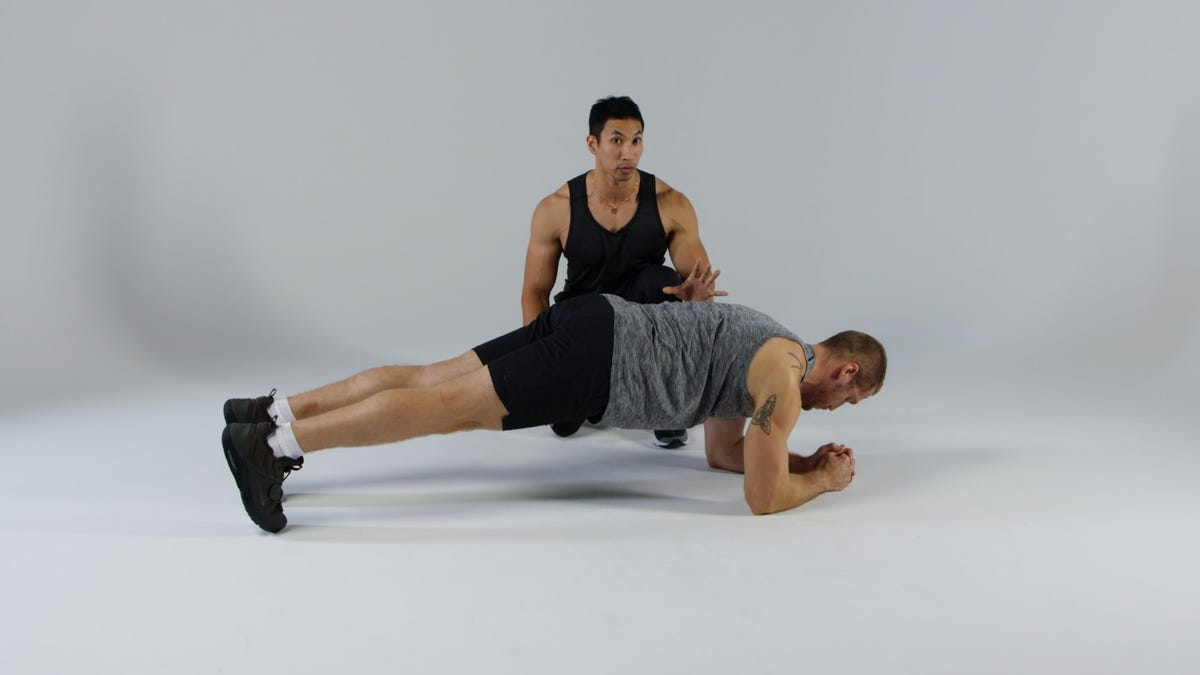
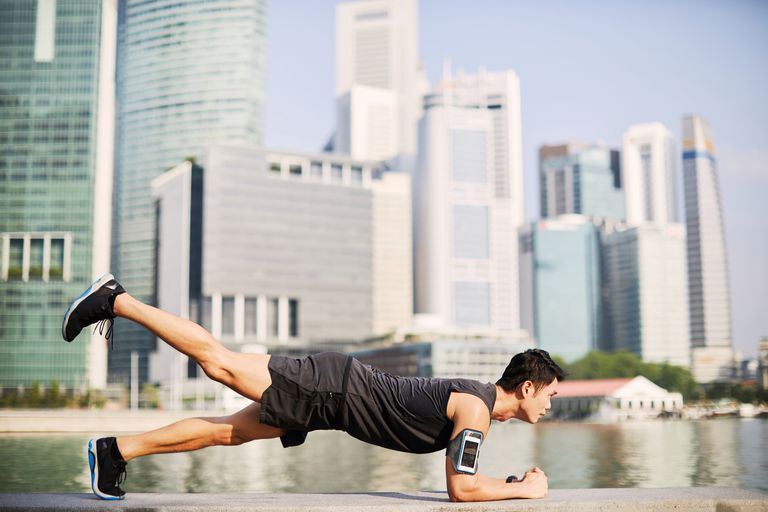
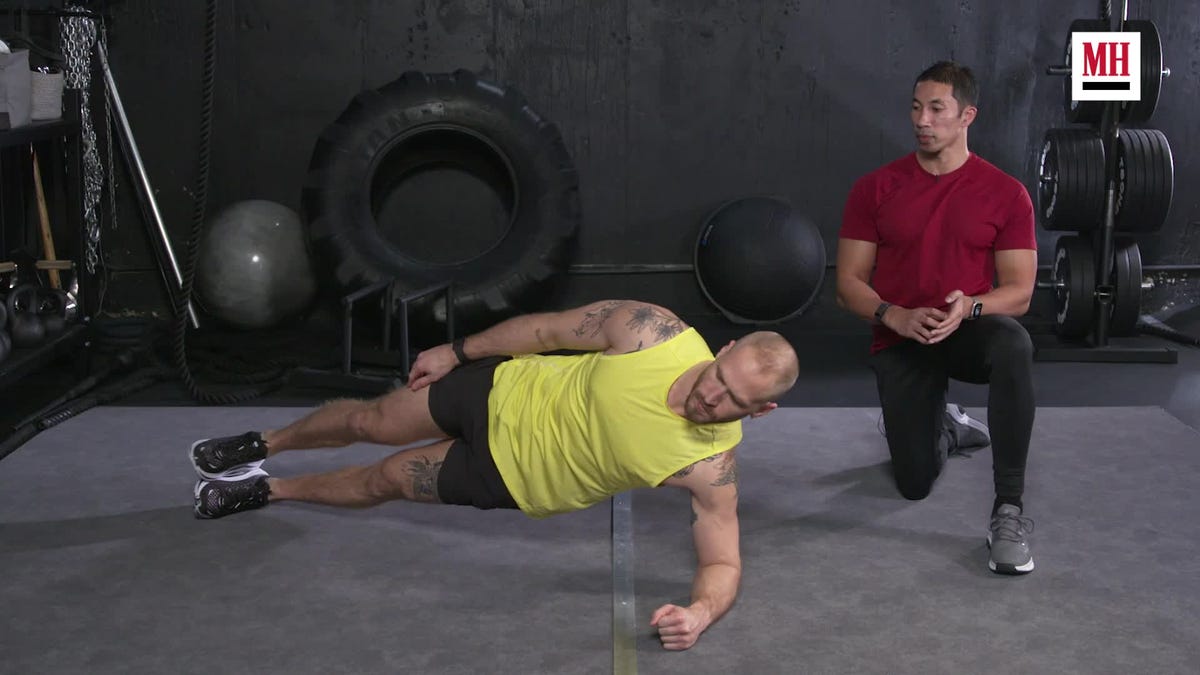
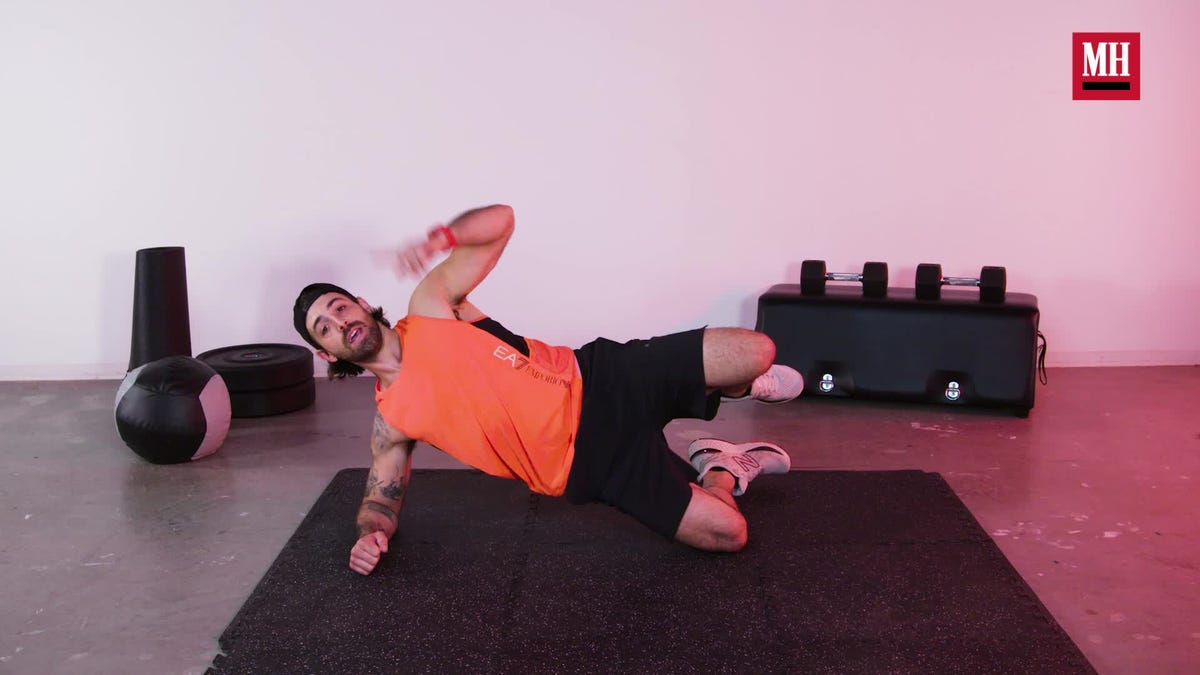
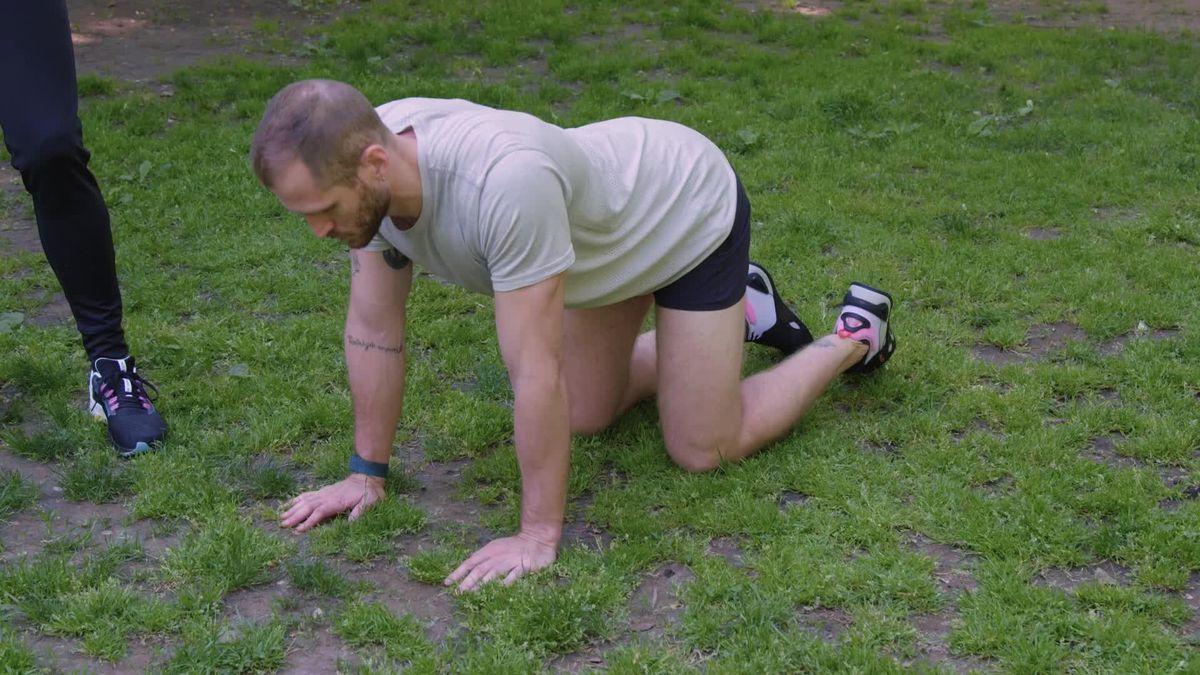
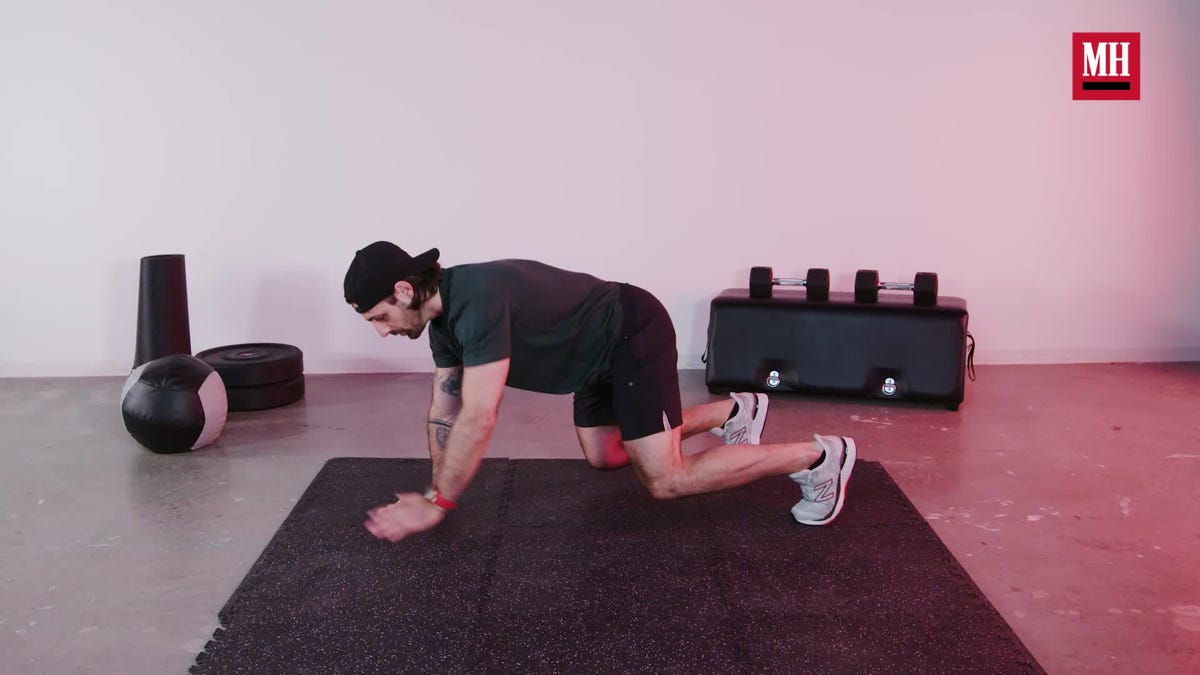


Comments are closed.